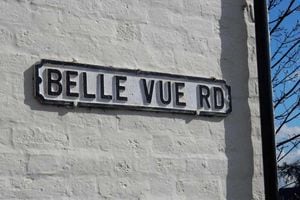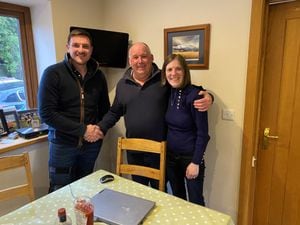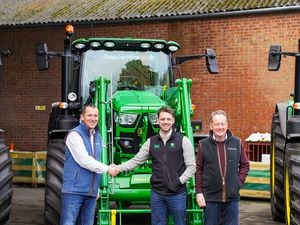Phil Gillam: Recalling the start of my love affair with Belle Vue
You could feel every gear change, and sometimes it seemed the suspension was as worn and battered as the upholstery on the upper deck seating.

But we loved those magnificent Midland Red double-deckers.
And feeling every bump in the road and every twist of the steering wheel was all part of the fun.
When we were kids in the 1960s the trip from Shrewsbury's old Barker Street bus station up to Belle Vue to see our Nan was a mini-adventure.
And if Nan was making dinner for us, there was the mouthwatering prospect of the best apple pie and custard in the world – served piping hot in pretty fruit-design dishes. Or if not apple pie then proper good old-fashioned rice pudding (with a very slightly burnt skin on the top). Fantastic!
The Victorian suburb of Belle Vue felt spacious and open to us back then, coming as we did from the tightly-knit streets of Castlefields on the other side of town.
My love affair with Belle Vue must have started then, when I was just a lad, drawing book and crayons at the ready, Matchbox cars in my pocket, travelling with my little brother and our mum.
We didn't always catch the bus, by the way. Often we would walk – a fair old trek from North Street to Links Road – and walking gave us a better chance of seeing some of the grander buildings along Belle Vue Road.
Nan lived in a charming "between-the-wars" semi with a pantry you could hide in and a garden big enough to have secret corners.
Before we grew too big, we could also hide underneath the dining table or even between the sit-up piano and the piano stool.
As we got older, my brother and I would leave the confines of Nan's house and explore the nooks and crannies of the nineteenth century streets of Belle Vue and Coleham.
Many years later I learnt that the suburb had grown in four ways.
Firstly, there was the outward expansion of Coleham to provide housing for those workers employed in riverside industries.
Secondly, there was an increase in the number of workers' cottages clustered around the public houses which had appeared along the coaching road at an early date: for example at The Boar's Head and The Plough (the latter being renamed the Belle Vue Tavern in the 1990s).
Thirdly, Belle Vue experienced the promotion of upper and middle class villa developments throughout the area from the 1840s onwards, giving the neighbourhood sporadic grandeur and architectural diversity.
And finally, the development of Shrewsbury as a major railway junction and locomotive maintenance centre from around the middle of the nineteenth century, gave rise to a further surge in the building of terraced cottages – particularly in the area that would become known as "the back of the sheds" (Scott Street, Rocke Street and Rea Street).
Many attractive features in the district can be seen in the architectural detail of places like Holly Lodge, Oakley Villa and Derwent House all in Oakley Street, and many of the houses in Moreton Crescent, Belle Vue Gardens, Hawthorne Road and Havelock Road.
All this social history is fascinating to me and, as I walk these streets, I can't help but think about all those generations who lived and worked in the area.
And, frankly, from the perspective of 2017, even the time of double-decker buses and the best apple pie in the world now seems like a long-bygone era.





